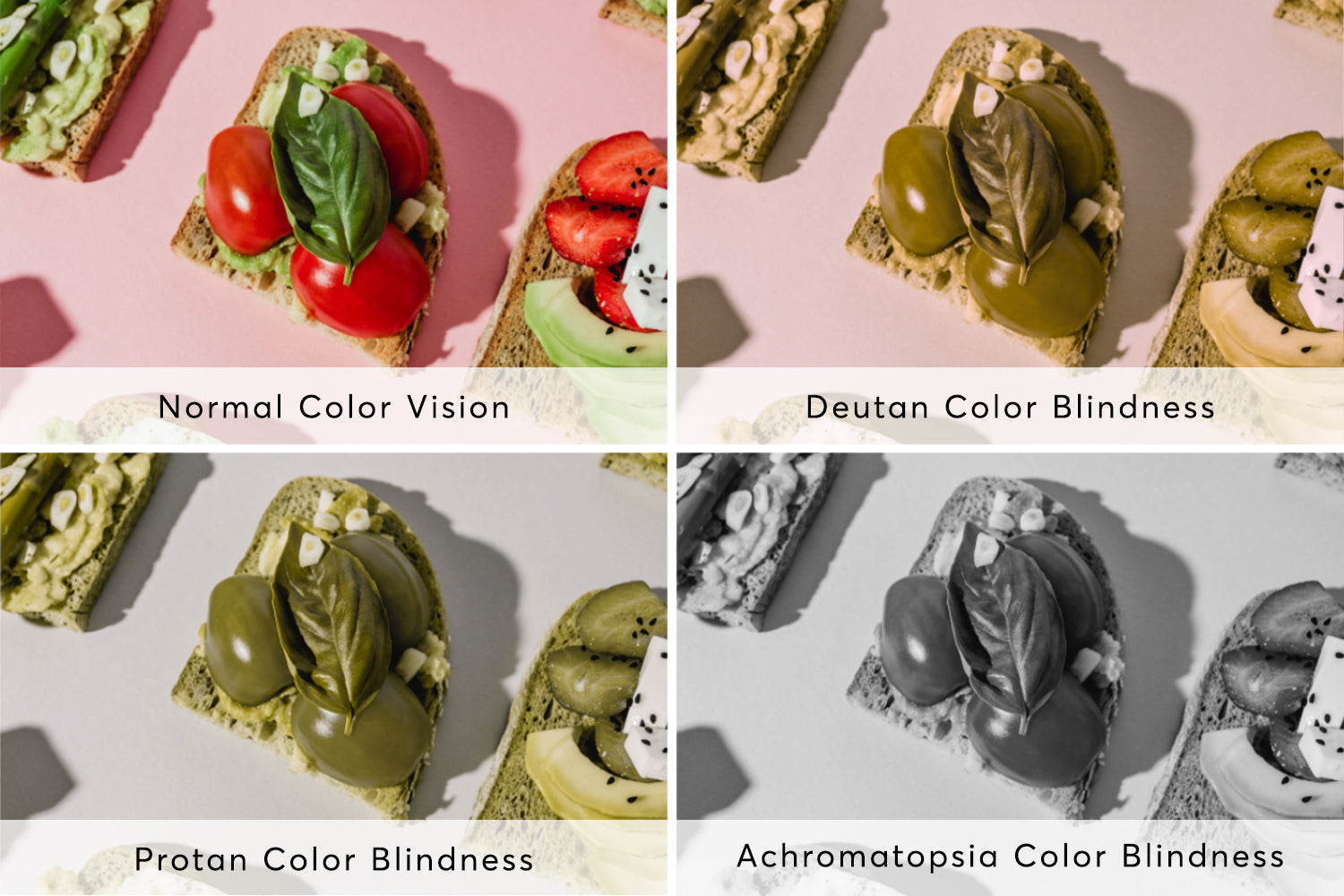Color blindness is an often misunderstood condition. Many assume because of its name that “color blind” means a person can only see in black and white. In actuality, the vast majority of people with color blindness do see color, but they see a much narrower range of color. It is estimated that a person with normal color vision can see up to 1 million distinct shades of color, but a person who is color blind may see as few as just 10 thousand colors (1% of the normal range).
Images that simulate color blindness, like the ones in this blog, can give an impression to people with normal color vision of what color blind people see, or answer the question "what does the world look like to a color blind person", however, these simulations actually fail to give a realistic understanding of the actual first person experience
So, what are the actual effects of color blindness on vision? The primary symptom that color blind people experience is color confusion. Put simply, color confusion is when someone mistakenly identifies a color, for example calling something orange when it is actually green.
Some commonly confused colors include:
 Protan
Protan
Color Blindness
 Normal
NormalColor Vision
 Protan
ProtanColor Blindness
 Normal
NormalColor Vision
 Protan
ProtanColor Blindness
 Normal
NormalColor Vision
 Protan
ProtanColor Blindness
 Normal
NormalColor Vision
Color Blindness Definition
Color blindness is caused by a change or reduction of sensitivity of one or more of the light-sensitive cone cells in the eye. The human eye contains millions of cone cells which work together to translate light into neural signals that are transmitted along the optic nerve to the brain, resulting in the sensation of color vision. The most common type of color vision deficiency is called “red-green color blindness” which occurs when the green and red sensitive cone cells’ sensitivities overlap more than they are supposed to. Instead of seeing green and red as distinct colors, the person sees them as being very similar, thus the resulting color confusion and other frustrations.
Everyday Color Confusion
Color confusion can manifest in many everyday tasks, resulting in frustrating outcomes such as a mismatched outfit, questionable paint choices, incorrect color naming and difficulty interpreting color coded information such as charts, graphs and maps, which may be misconstrued as a learning disorder in early education.
Another task that can be frustrating is driving a car when color blind; for the color blind person, green light tends to look very pale green or nearly white, and red light may seem closer to orange. Color blind drivers often say they look more for the traffic light’s position than its actual color. Problems also arise when traffic lights are oriented differently than their typical vertical configuration (i.e. sideways, read left to right). If you encounter a driver who hesitates or slows at green lights, consider that they may be a color blind driver looking out for your safety and theirs. The variability of traffic light positions and non-color blind friendly colors pose a unique problem for color blind drivers that can potentially lead to unsafe situations.


Sports is another area where color blindness may inhibit some from playing at their full potential. Take cricket for instance. Because cricket is played with a dark pink ball on green grass, playing cricket with color blindness (also spelled "colour blindness") can easily cause confusion and dangerous in-play situations during this fast-moving sport. Recently, an EnChroma customer noticed their 12-year old son struggling with his cricket game:


To learn more about the confusion the color blind community faces, read our blog, What Is It Like to Be Color Blind?
Harlee's EnChroma Moment
Looking Through Color Blind Eyes
Because color is learned and based on each individual’s perception, we can never report with 100% accuracy how all color blind people see the world. However, to give you a better answer to the question "what do things look like for a colorblind person?", we’ve simulated life through the eyes of someone with four different types of color blindness (top image).
 Protan Color Blindness
Protan Color Blindness
 Normal Color Vision
Normal Color Vision
Deutan color blindness is a form of red-green color blindness characterized by the shifting of green light-sensitive cone cells closer to red-sensitive cells than is normal. This causes “green-deficient” color blindness.
Protan color blindness is a form of red-green color blindness characterized by the shifting of red light-sensitive cone cells closer to green-sensitive cells than is normal. This causes “red-deficient” color blindness.
Tritan color deficiency is most commonly acquired later in life due to aging of the eye or medical complications. It is characterized by a reduction in the sensitivity of the blue light-sensitive cones such that blue shades seem darker and less vibrant. In extremely rare cases tritanopia can be inherited also.
Achromatopsia is also known as “complete color blindness” and is the only type that fully lives up to the term “color blind”. It is extremely rare, however, those who have achromatopsia only see the world in shades of grey, black and white. In some cases low vision disorders such as progressive cone dystrophy can cause a gradual deterioration of color vision that eventually turns into complete achromatopsia.
Still curious to learn more? Check out our Types of Color Blindness page for a more in-depth look at these and more forms of color blindness and how they affect those who have them.
How Do Color Blind People See and How Can EnChroma Color Blind Glasses Help?
The world looks different through color blind eyes. Color confusion can lead to many frustrations in everyday life. EnChroma glasses work by blocking specific wavelengths of light where the cone cells are most overlapping, effectively increasing the separation between the red and green cone signals so that previously confused colors become more vibrant and distinct. Learn more about what and how color blind people see and how EnChroma glasses work here. From helping you dress sharp in the morning to giving you an edge on the playing field, it is EnChroma’s mission to deliver bright, vibrant color that improves the lives of the color blind community.
Share your story and join the #EnChroma community!




